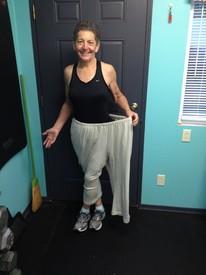Bike road side assistance recommendations?

eric2light
Posts: 113 Member
Spoke Bicycle Insurance has road side assistance... anyone recommend anything they like?
0
Replies
-
Where are you riding? Do you have cell coverage?
I'm an avid cyclist and have never heard of anybody riding with road side assistance insurance.
There aren't that many things that are going to go wrong on a typical ride, especially on a well maintained bike. Flat tires are the #1 issue road cyclists encounter. The standard practice is to carry a spare tube (two for a very long ride), a pump or CO2 inflator, and tire levers. You can even get by without the levers. Fixing a flat is a very good skill to have, you should practice it in your living room where it's warm, dry, and comfortable.
It's also wise to carry a little bit of duct tape, if you pop a spoke, you can use the tape to immobilize it for the limp/ride home or back to your car.
For everything else, there's the call of shame. Either to a spouse, friend, etc, or to Uber or Lyft.6 -
AAA will pick you up if your bike breaks down. They won’t fix your bike. They may or may not promise to transport your bike, but I think most drivers would do their best to take it. This is my back up plan if I have a problem while riding alone.
Other roadside car services might do something similar. Also ask at your LBS what cyclists in your area do.2 -
Most cyclists carry a spare tube, tire levers and air to fix a tire. This is 95% of breakdowns. It is easy to change. Your local LBS can show you how to do this.
Tip: Pedro's tire levers (it's just a brand) are way easier to use than any other brand.3 -
RACT apparently has something.
Otherwise ... bring your own.0 -
jhanleybrown wrote: »Tip: Pedro's tire levers (it's just a brand) are way easier to use than any other brand.
Schwalbe are my favorite (thin enough to get in when it's too tight for any other levers I own, including Pedro, Crankbrothers, Park,...).
0 -
I would ask any local cycling clubs or shops about what is available in your area. They will probably be best to recommend someone for you.1
-
Which country are you in Eric?
International rescue might not provide an appropriate response time!
My primary roadside assistance is me and the few tools and spares I carry.
Backup is a credit card and mobile phone to call for a pickup.1 -
I am my own roadside assistance. I've replaced a tube in my tire, repaired brakes on the fly. I carry my cell phone if I need to be picked up.1
-
I usually ride solo, so another item I carry in addition to bike tools, cellphone, etc., is a Road ID bracelet worn on my wrist. On the nameplate is my name and DOB info, as well as names and cellphone numbers for my wife and kids. I sure hope I never need it, but the bracelet makes this info readily available to others who may need it to help me in an emergency.3
-
I carry all the stuff to replace a tube plus a thing called a multitool which comes in handy to fix things like broken brakes and a spoke tool. It even has a chain tool which would have come in handy before I started carrying it lol!!
I also want to mention that sometimes a local bike shop will send someone if it isn’t super busy. One time I had a bent wheel so I called the nearest shop from my cellphone. They coached me enough on spoke tightening/loosening to get back on the road but also said they would send someone if I couldn’t get it.2 -
This seems shammy...I'm an avid cycling and mountain bike enthusiast, and I've never heard of this being a thing for either myself or my cycling peeps. Carry a spare tube, tire lever, CO2 inflator, and a bike tool. The number one issue cycling is flat tires, so it's good to know how to change a flat.2
-
As others have suggested... this seems odd to me.
What are you hoping for from or expecting to use the service for?0 -
NorthCascades wrote: »Where are you riding? Do you have cell coverage?
I'm an avid cyclist and have never heard of anybody riding with road side assistance insurance.
There aren't that many things that are going to go wrong on a typical ride, especially on a well maintained bike. Flat tires are the #1 issue road cyclists encounter. The standard practice is to carry a spare tube (two for a very long ride), a pump or CO2 inflator, and tire levers. You can even get by without the levers. Fixing a flat is a very good skill to have, you should practice it in your living room where it's warm, dry, and comfortable.
It's also wise to carry a little bit of duct tape, if you pop a spoke, you can use the tape to immobilize it for the limp/ride home or back to your car.
For everything else, there's the call of shame. Either to a spouse, friend, etc, or to Uber or Lyft.
Agree all above, some extras.
I tend towards self-sufficiency for "routine/minor" things, esp. if you're out in the boonies somewhere. Flats, chain, minor mech (brake and derailleur adjustments, for instance). Many bike shops offer Park Tools courses, REI has courses ranging from Trailside Maint to various mech (chain/derailleur, gear/brakes, tire, etc.). I knew a lot of this stuff from my "bike life #1" decades ago, but coming back into riding as an old guy, had to relearn it for the new tech. There's also a bunch of halfway decent videos out on Youtube for a variety of topics.
If you ride solo, obviously you're carrying everything you need, but this needn't be all that much (e.g., a spare master link weighs nada). I carry a mini frame pump plus CO2, a spare tube, and a little patch kit. Duct tape wrapped around an old hotel keycard. A couple of other goodies, a bike multitool, tire irons, cash - it all fits in a small undersaddle kit. When my wife rides with me, she relies on me for some parts and tools, but carries her own tube and a couple of items. She's a Schrader valve, I'm Presta. In a steady group situation, it's possible to divide up some of the carry items, but most riders carry all their basics anyway.
Why carry BOTH a pump and CO2? Well, in the old days, with small tires, even at 110 psi, I could use a frame pump and get the tube inflated pretty well. I tried this on my 29x2.35 tires, which I keep at about 50psi, as a test of the mini frame pump when I bought the bike. 450 strokes later, I was up to the usable 40psi range. I went out and got the CO2. But, CO2 may fail, or be used up, with multiple punctures same ride, so the pump is always there. CO2 is a "get home" remedy, as it leaks away through the rubber in a couple of days or less.
You'll find more and more locales are positioning repair kiosks in parks and on trails. They vary somewhat, but typically you can pump your tires and tighten bolts and such with the tools - presumes you know something of the basics (but also, they have a scan code to use with your smartphone that will give directions, too). Sometimes the kiosks are vandalized or simply suffering from exposure to the elements, but they are there. I volunteer as a Bike Ambassador in my local national park, and one of my "patrol duties" is to monitor the status of the kiosks and perhaps lend some guidance to users.
Finally, you can call for help if you're within range. Some areas have mobile repair services. For instance, we go to the Ottawa area fairly often for family, and they have something called Velo-Fix which might come to you. In NJ where I live, there are a couple of local-area folks that do that too. You have to research where you live. AAA, believe it or not, has bike roadside assistance built into membership, but you need to have your AAA card with you to use it. And then, there are the insurance companies such as you've asked about. Like AAA, their performance will depend on their local support network.
Long reply, sorry. But hope it helps.
1 -
Yep. Just googled it... It's under Markel.0 -
Yep. Just googled it... It's under Markel.
Ah, that makes a bit more sense, then. Not sure I'd pay for it specifically, but can't hurt to have it as a secondary benefit.0 -
NorthCascades wrote: »Where are you riding? Do you have cell coverage?
I'm an avid cyclist and have never heard of anybody riding with road side assistance insurance.
There aren't that many things that are going to go wrong on a typical ride, especially on a well maintained bike. Flat tires are the #1 issue road cyclists encounter. The standard practice is to carry a spare tube (two for a very long ride), a pump or CO2 inflator, and tire levers. You can even get by without the levers. Fixing a flat is a very good skill to have, you should practice it in your living room where it's warm, dry, and comfortable.
It's also wise to carry a little bit of duct tape, if you pop a spoke, you can use the tape to immobilize it for the limp/ride home or back to your car.
For everything else, there's the call of shame. Either to a spouse, friend, etc, or to Uber or Lyft.
Same here.
I pre-check my bike and carry the above in a seat pouch. Made sure my kids could fix the basics before going out on their own.
1 -
Let's see, I guess I'll post mine:
Each bike:
• Mini pump (attached to frame or stored nearby for backpack for the fat bike)(between HP vs HV and Presta-only on the super tiny sport road bike HP pump, I don't currently have overlap).
• Spare tube (stashed in each saddle bag, or strapped to seat post on the city/commuter/cheap bike with a rack rather than saddle bag)
• Fat Bike only: pressure gauge
In 'tool bag' (clear shower cap for ease of finding stuff inside a ziploc for waterproofness)(shared between bikes and gets added to the saddle bag/backpack/rack box on riding a specific bike):
• trio of Schwalbe levers
•CO2 inflator (Portland Design Works - this one is pretty good with storing a partially used canister as well, which is nice - I occasionally use it to top up when short on time)
• 2-3 CO2 cartridges (extras have proven to come in handy, esp with a group)
• very small Multitool (Park's tiniest one - combo flat/Philips screwdriver, the 3 sizes of hex bits that typically are needed in the field and 1 torx)(useful for seat adjustments, tightening/adjusting accessories like light mounts, water bottle mounts, brakes, derailleur - all of which I've done at least once on a ride)
• 1 Tire boot (minimalists typically will carry a dollar bill to fill this purpose. These are pretty thick and have adhesive - they stay in place well so easy to position and I've used them long term in some cases)
• Most of a Patch kit (for that 2nd flat)(contents removed from box to small baggie for space and not all the patches from the kit)
• Master links (3 10S & 3 6/7/8S)
• Small slip of laminated paper with emergency contact info
• 2 baby wipes in a very small baggie
• a paper towel
• 1 or 2 pouches of fruit snacks
(I think that's everything, listing this from memory)
(I may be a bit of a pack rat)
Stuff I've opted not to carry that some do:
- Spoke tool (I've never needed one, however I'm a 4'10" female. Generally (in my experience), the heavier you are, the more likely you may have issues with spokes and need to tend to them. If you're on the heavier side or have frequent commutes on salty roads, this might be something you want.
- Chain tool. (I've had a major chain failure exactly twice in all these years - 1 was an off-brand/off-type of masterlink that failed in my early years, the other was from reusing a link by reconnecting with a chain tool after not realizing I was out of master links). If a failure other than that happens to me, it'll likely be on a steep climb in a large group ride anyway). (ETA: this too is failure more likely to happen if on the heavier side, as the chain will be taking a lot more force on a climb).
- Larger multitool. I've never needed anything not on the micro for anything I've ever wanted to adjust in the field.
1 -
jhanleybrown wrote: »Most cyclists carry a spare tube, tire levers and air to fix a tire. This is 95% of breakdowns. It is easy to change. Your local LBS can show you how to do this.
Tip: Pedro's tire levers (it's just a brand) are way easier to use than any other brand.
Which ones do you recommend?
* https://smile.amazon.com/Pedros-Downhill-Bicycle-Tire-Lever/dp/B000IZEHC4/ref=sr_1_12?dchild=1&keywords=Pedro's+tire+levers&qid=1583566923&sr=8-12
* https://smile.amazon.com/Pedros-Bicycle-Tire-Lever-Pair/dp/B000IZGFCE/ref=sr_1_2?dchild=1&keywords=Pedro's+tire+levers&qid=1583566923&sr=8-20 -
I usually ride solo, so another item I carry in addition to bike tools, cellphone, etc., is a Road ID bracelet worn on my wrist. On the nameplate is my name and DOB info, as well as names and cellphone numbers for my wife and kids. I sure hope I never need it, but the bracelet makes this info readily available to others who may need it to help me in an emergency.
While not about bike roadside assistance, I second the RoadID. I pony up the $10 or $30 per year (can’t remember which) for the online piece. My physical roadID has emergency contact #’s as well as the contact info and serial number to my online account - which stores additional emergency contact info, my medical history (conditions/allergies), my insurance info/card and copies of documents (like if I had a POA or medical directive or something). I travel a lot and often alone, so knowing emergency responders have immediate access to all that info if I’m incapacitated (and 2000 miles from home) gives me some peace of mind.0 -
eric2light wrote: »jhanleybrown wrote: »Most cyclists carry a spare tube, tire levers and air to fix a tire. This is 95% of breakdowns. It is easy to change. Your local LBS can show you how to do this.
Tip: Pedro's tire levers (it's just a brand) are way easier to use than any other brand.
Which ones do you recommend?
* https://smile.amazon.com/Pedros-Downhill-Bicycle-Tire-Lever/dp/B000IZEHC4/ref=sr_1_12?dchild=1&keywords=Pedro's+tire+levers&qid=1583566923&sr=8-12
* https://smile.amazon.com/Pedros-Bicycle-Tire-Lever-Pair/dp/B000IZGFCE/ref=sr_1_2?dchild=1&keywords=Pedro's+tire+levers&qid=1583566923&sr=8-2
Personally: neither..I find the plastic Pedro is too fat to use with at least 1 of my tires, and a metal one runs a larger risk of puncturing the tube so I wouldn't go with that as my first option (unless a really hard-to-fit tire/rim combo that is otherwise troublesome). The plastic Pedro's are pretty popular though, so they might work well for a lot of tires (just not mine).0 -
eric2light wrote: »jhanleybrown wrote: »Most cyclists carry a spare tube, tire levers and air to fix a tire. This is 95% of breakdowns. It is easy to change. Your local LBS can show you how to do this.
Tip: Pedro's tire levers (it's just a brand) are way easier to use than any other brand.
Which ones do you recommend?
* https://smile.amazon.com/Pedros-Downhill-Bicycle-Tire-Lever/dp/B000IZEHC4/ref=sr_1_12?dchild=1&keywords=Pedro's+tire+levers&qid=1583566923&sr=8-12
* https://smile.amazon.com/Pedros-Bicycle-Tire-Lever-Pair/dp/B000IZGFCE/ref=sr_1_2?dchild=1&keywords=Pedro's+tire+levers&qid=1583566923&sr=8-2
Personally: neither..I find the plastic Pedro is too fat to use with at least 1 of my tires, and a metal one runs a larger risk of puncturing the tube so I wouldn't go with that as my first option (unless a really hard-to-fit tire/rim combo that is otherwise troublesome). The plastic Pedro's are pretty popular though, so they might work well for a lot of tires (just not mine).
I keep a set of these Park tool levers in my saddlebag:
https://www.amazon.com/Park-Tool-Carded-Tire-Lever/dp/B00NU928OO/ref=sr_1_5?dchild=1&keywords=Park+Tool+tire+Lever&qid=1583765742&sr=8-50
This discussion has been closed.
Categories
- All Categories
- 1.4M Health, Wellness and Goals
- 394.9K Introduce Yourself
- 44K Getting Started
- 260.6K Health and Weight Loss
- 176.2K Food and Nutrition
- 47.5K Recipes
- 232.7K Fitness and Exercise
- 444 Sleep, Mindfulness and Overall Wellness
- 6.5K Goal: Maintaining Weight
- 8.6K Goal: Gaining Weight and Body Building
- 153.2K Motivation and Support
- 8.2K Challenges
- 1.3K Debate Club
- 96.4K Chit-Chat
- 2.5K Fun and Games
- 4.2K MyFitnessPal Information
- 16 News and Announcements
- 1.3K Feature Suggestions and Ideas
- 2.8K MyFitnessPal Tech Support Questions














